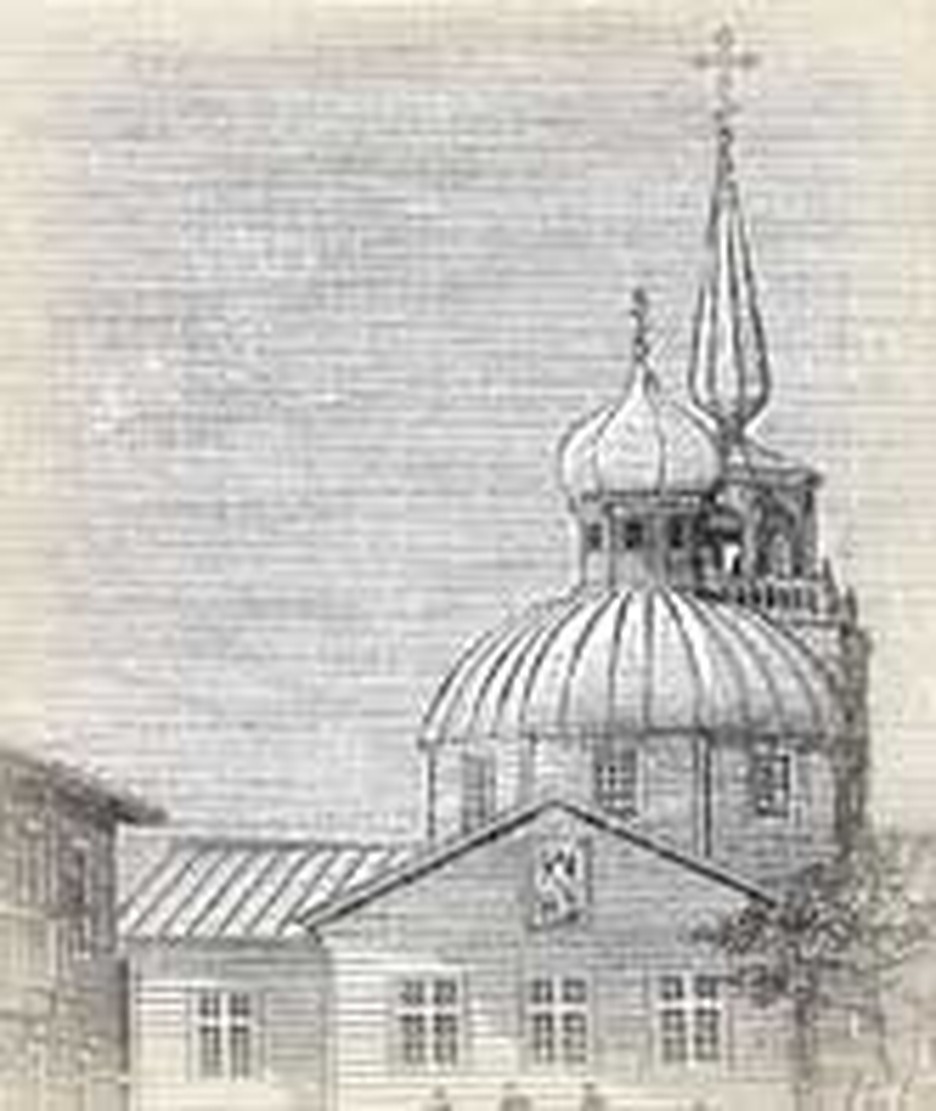
You've heard of Paul Bunyan, the brawny lumberjack of legends who could contrive a way around any problem. Church history has a real-life Paul Bunyan. John Veniaminov was six feet three and built like an ox. He seemed not to know the meaning of weariness and was a practical genius for blacksmithing, brickmaking, carpentering, clockmaking, furniture building, and construction. These skills served the church well.
In 1823, when Veniaminov was still a priest in Irkutsk, where he had married Catherine Sharina and taken his training at the Russian Orthodox Seminary, his superior, Bishop Michael Burdakov asked him to go to Alaska. Thirty years earlier, Russians had begun converting Indians, but their mission collapsed when the monks died or retired. Someone new was needed to take over the work. "Nyet," answered Veniaminov. He had a family to care for. Burdakov asked again. Veniaminov finally relented.
There was no trans-Siberian railroad or steam ship to speed the young family to their destination. It took them fourteen months to reach windswept Unalaska Island. There they found that they had neither a parsonage nor a church. Veniaminov put aside all other plans and built a house, chapel and meteorological station before evangelizing the Aleuts.
The Aleuts knew little about Christianity beyond baptism. But Veniaminov was delighted with their attitude: "The most inexhaustible preacher might well be worn out before their attention and their eager desire to hear the word of God began to fail." He learned the Unanagan language, invented an alphabet, opened a school, and translated the gospel of Matthew. Somehow he found time to write a book about Aleut culture, Notes on the Island of Unalaska and a catechism called A Guide to the Kingdom of Heaven.
Peering across the sea, the giant missionary saw spiritual and human needs everywhere and set out to meet them. During the four warm months of each year, he scrunched himself into a kayak for fourteen hours or more a day, paddling to the islands of his parish. After ten years, his feet were crippled. He moved to Sitka, learned the Tlingit language, opened an orphanage, and built a cathedral with icons so beautiful that visitors were amazed.
In 1839, Veniaminov approached the Holy Synod in St. Petersburg, leaving Catherine with family in Irkutsk. When he had explained the needs of Alaska to the church leaders, they appointed him bishop of the Aleutians, Kamchatka, and the Kurile Islands.
Veniaminov's gladness was crushed by news that Catherine had died. He returned to Sitka and set up a seminary to train priests. Like Paul Bunyan, no task seemed too great to him. He traveled across his whole diocese, even to the farthest north of Siberia. The church made him an archbishop, and added the provinces of Yakutsk and Amur to his care. At seventy Veniaminov retired. Or so he thought.
The Metropolitan of Moscow, highest figure in the Russian Orthodox church, died. Everyone clamored for Veniaminov to take his place. During his eleven years in Moscow, Veniaminov made missions a priority. Every Christian has a missionary obligation, he taught. With his support, the Orthodox Missionary Society was created on this day, January 25, 1870. One of its first missionaries was Nikolai, who did impressive work in Japan. Veniaminov also set up a committee to offer good pay and pensions for priests who volunteered for at least ten years of service in Siberia. Many fine priests signed on.
In 1977 Veniaminov was canonized as the "Apostle to America." Two years later Alaska celebrated the bicentennial of his birth. A hymn in his honor has these words, "Rejoice! O holy Father Innocent, Equal to the Apostles and the Enlightener of North America."
Bibliography
- Neill, Stephen. A History of Christian Missions. Penguin, 1964.
- Time-Life Books. The Alaskans. Alexandria, VA: Time-Life, 1977.
- Ware, Timothy. The Orthodox Church. Pelican, 1972.
- Various internet articles at www.gi.alaska.edu , www.educ.ak.us, ifrc.irk.ru/hist/veniamin.htm ,and www.roea.org
Last updated May, 2007.



